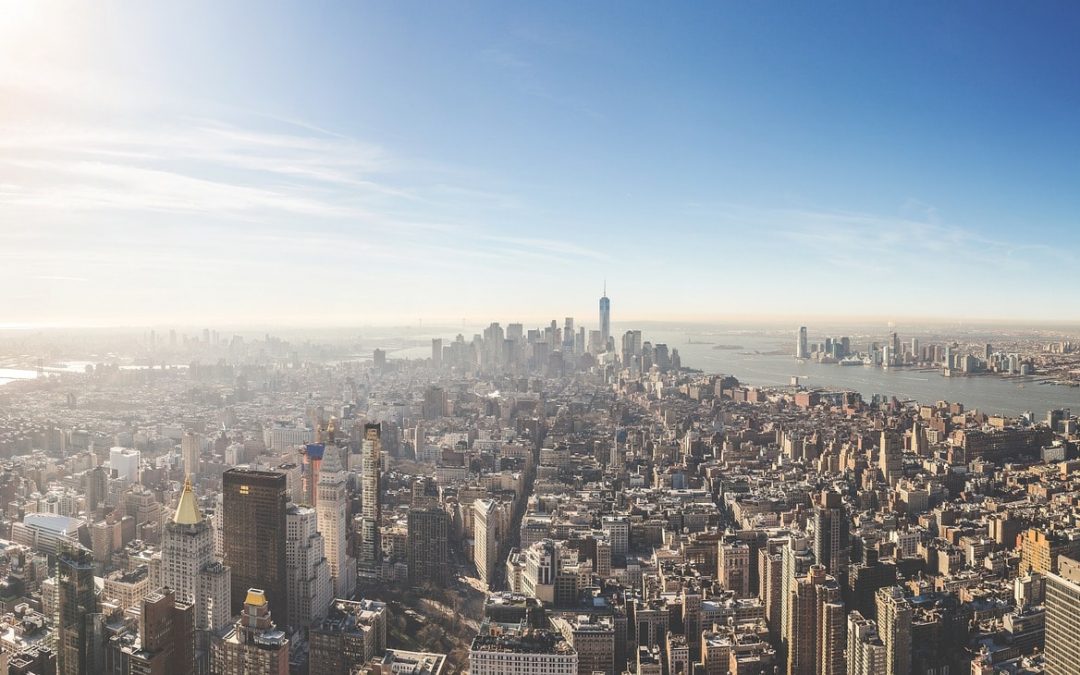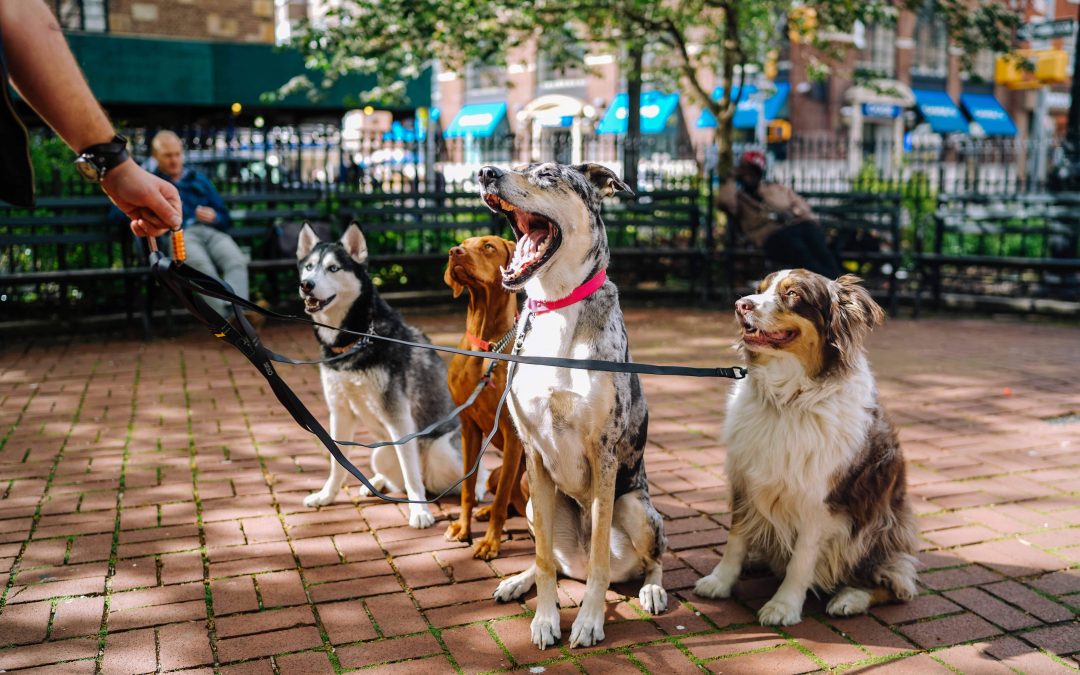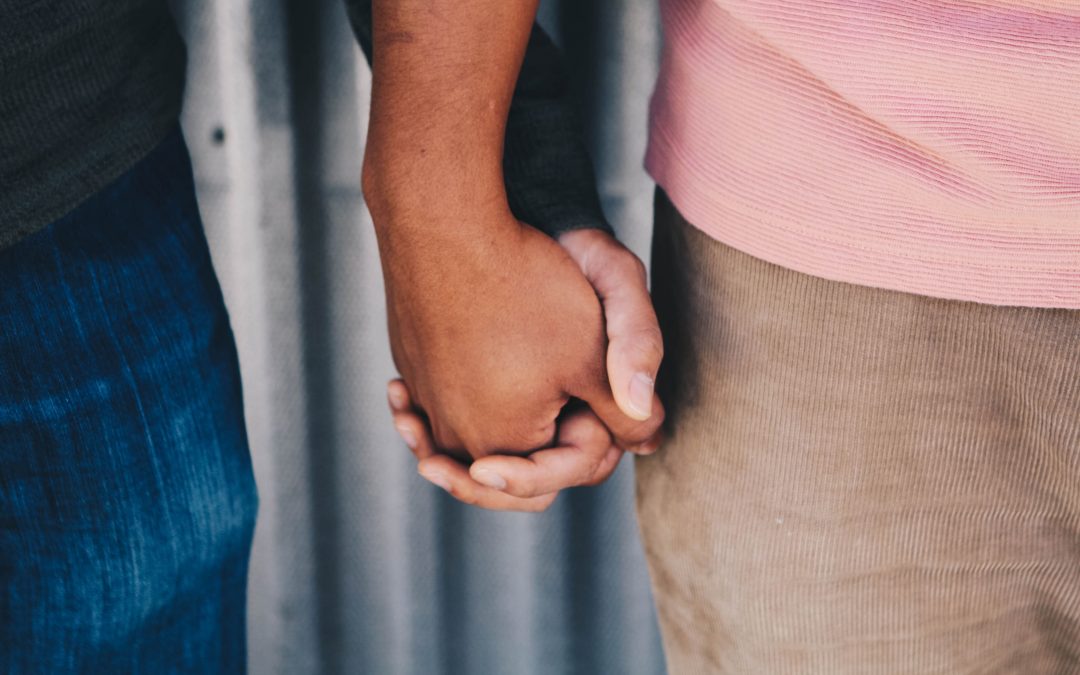
by BCB Property Management | Sep 1, 2017 | Neighborhoods, New York City
Any New Yorker can tell you that this is a city defined by its wide variety of neighborhoods. Across all the boroughs, every distinct enclave has its own character and personality, not to mention history. Making your way in and around the city starts with a working knowledge of its diverse assortment of neighborhoods.
Founded as a Dutch colony, many of New York City’s neighborhood names date back to that time. The Dutch may have left after the British took control of the city and renamed it from New Amsterdam, but labels such as Brooklyn and The Bronx (derived from the Dutch names Breukelen and Bronck) still remain as reminders of the city’s roots. Not surprisingly, many neighborhoods retain the names they’ve had since those early colonial days.
Harlem
A cultural touchstone not just for the city but for the entire United States, Harlem is one of New York’s best-known neighborhoods. This home of legendary artists, poets, and attractions like the Apollo Theater and the Cotton Club was once an outpost for Dutch settlers who needed a space to stay far from New Amsterdam at the southern tip of Manhattan island. This safe haven was dubbed Nieuw Haarlem by Governor Peter Stuyvesant, after the Dutch city a short distance from the original Amsterdam. Once the Dutch left New York, the name was anglicized to just “Harlem.”
Astoria
Many streets of New York, such as Dyckman in Upper Manhattan and Schermerhorn in Brooklyn, were named for wealthy denizens of the area, whose properties defined those surroundings. For someone with the fortune of John Jacob Astor, just a street wouldn’t suffice. The neighborhood formerly called Hallett’s Cove was never actually home to the fur trader or his family, but given the label in order to attract him to invest in the Queens district. It didn’t quite work (he only invested $500) but the name stuck.
Red Hook
This maritime district has always been defined by the port and shipping that made Brooklyn one of the country’s busiest regions. Red Hook comes from the Dutch “roode hoek,” referring to the red clay soil of the neighborhood (long since buried under concrete roads) and the geographical point jutting out into Upper New York Bay. Interestingly enough, the “hook” of Red Hook refers to the Dutch word for “point” or “corner,” not any actual hook-like geographical feature.
Coney Island
It wasn’t only geographical features that inspired Dutch settlers in naming their new territories. This former beachfront getaway, home to the famed Cyclone and Wonder Wheel, got its name from the Dutch word conyne for “rabbit” after the wild rabbit population that lived on what was then an actual island, with a river separating it from the mainland. Shifting sediments attached the island to the rest of Brooklyn while rifle-toting settlers did away with the rabbits, but the Coney Island name remains.
Turtle Bay
Unlike Coney Island, this neighborhood wasn’t identified by any animal population. Rather, Turtle Bay got its name from the Dutch word deutal, or knife. Early settlers of the bay (which was filled in after the Civil War, allowing for further buildings eventually including the United Nations complex) noticed a resemblance to a bent knife and named the bay accordingly. Thanks to its proximity to the UN, Turtle Bay is now home to many foreign consulates, making it one of the more plainly diverse regions of the city.
Rockaway
The Dutch weren’t the only ones who gave names to the various neighborhoods of the city. Several of them, in fact, descend from the language of the Lenape tribe, the area’s indigenous inhabitants. Queen’s beachfront peninsula, a distinct part of the NYC map, got its name from the old Lenape word “rack-a-wakee,” whose meaning is not certain but is thought to mean “place of sands.” Also behind the names of Canarsie in Brooklyn and of course Manhattan, this language is one of many that makes New York City the unique melange of cultures famed worldwide.

by BCB Property Management | Jul 25, 2017 | Brooklyn, Neighborhoods, New York City
The dog owners of New York City have spoken and, once again, it is their opinion that Bella and Max are best names for their beloved pets.
This is, according to The New York Post, the second year in a row that Bella (“beautiful in Italian) and Max (often, in humans, short for “Maximilian” meaning “greatest”) top the list of popular canine names.
The Post gets its data from the Health Department’s dog license records each year. New York state law requires dog owners to license their dogs, and the city requires the tags be attached to the dog’s collar.
In 2016, according to the records, there were 1,358 Bellas and 1,268 Maxes. The 868 Charlies, 872 Lolas and 867 Rockys completed the top-five-names list.
In all, there were 87,031 dogs registered in 2016.
Of course, this being New York, every borough and neighborhood has its own idea about what pup names are best.
Once again, the Health Department is there to help with a map that shows the most popular name, based on neighborhood.
In the Upper West Side, Hudson and Theodore seem to be the thing. But just across Central Park Tiny and Nellie are the “It List” monikers.
Head for Harlem and the dog owners seem to want their pets to toughen up with names like Rocky and Boomer.
What’s even more fascinating is taking a look at popular breeds of dogs, and giving them the popular name.
According to the American Kennel Club, the French bulldog, described in this article as “adorable and squishy” has been the most popular breed in the city for three years.
Labrador retrievers were the second most popular, and was particularly beloved on the Upper West Side.
So, apparently, to be trendy, the best idea would be to adopt a French bulldog and name it Max, or Bella. Unless it’s an Upper West Side pooch, in which case a Lab named Hudson would be the way to go.
Or, like a truly independent New Yorker, folks could get a mutt at the shelter, name it Fluffy (which ranked 93rd overall in the city) and live in whichever neighborhood they chose, proudly walking their pet, daily, on the sidewalks they call home.

by BCB Property Management | Jul 5, 2017 | Neighborhoods
So you’ve decided to take the plunge and move to New York City. Congratulations! Making your way in this city can be intimidating, but knowing where you want to settle can take much of the pressure off of your transition. There are a number of factors to consider when choosing a neighborhood in NYC, so read on for some ideas about the best areas for newcomers.
Long Island City
If close proximity to Manhattan at sub-Manhattan prices sounds good to you (and it should), LIC is a great place to call home. This former industrial hub offers a peaceful escape from Manhattan with hard-to-beat views and a rapidly growing restaurant scene. If you’re confused by the name, don’t worry. Just know that while you’re technically on Long Island (as Queens and Brooklyn are geographically part of the island), but well within the confines of the five boroughs.
Washington Heights/Inwood
This neighborhood perched at the upper tip of Manhattan will give you all the prestige of a “New York, New York” address at a fraction of the price of more southerly options. A number of pre-war buildings make for affordable lodgings for someone making their entrance to the city. One great attraction is Inwood Hill Park, the only piece of Manhattan that stands untouched as it originally was before the city became the concrete jungle it is today.
Crown Heights
If Brooklyn calls out to you, Crown Heights has the perfect combination of culture and affordability to welcome any newcomer. Though new developments are popping up fast, the neighborhood still holds both classic charm and up and coming hotspots. A remarkably diverse region, it’s one of the few places in the city where you’re equally likely to hear Yiddish and Creole spoken on the same block.
Chinatown
As long you’re not intimidated by living in what’s most likely the busiest neighborhood in the city, the affordable rents in Chinatown make it a good option. While it may be a bit daunting, the proximity to cultural hubs like SoHo and the Lower East Side mean you’re never far from somewhere new and exciting. Just try not to make any major purchases on Canal Street.
Sunset Park
You might have thought there was nowhere to get great Latin American and Chinese food, but then you didn’t know Sunset Park. For a wide variety of quality eats on a budget, it’s hard to do better than this Brooklyn nabe. Sunset is also home to the rapidly growing Industry City development, which promises a wealth of new shopping and entertainment options that’s sure to raise the neighborhood’s profile in the near future, so you’ll be glad you got in early.

by BCB Property Management | May 1, 2017 | Brooklyn, History, New York City
The history of tattoos – particularly in a city as creative and cosmopolitan as New York – is as colorful as the epidermal artwork itself. As The New York Times notes, denizens of New York are surrounded by advertising, so how could they resist using their own skin as a form of expression?
But tattoos have been inked for centuries – even millennia – all over the world. There is evidence of Native Americans bearing marks upon their skin: “’Indigenous people of North America pricked or scratched the skin with sharpened bones, branches, or needles, then rubbed soot or crushed minerals into the wound as pigment.’” According to Time, “in the mid-18th century, Native American women tattooed themselves to alleviate toothaches and arthritis, similar to acupuncture.” A set of mezzotint portraits titled “The Four Indian Kings” depicts tattooed Mohawk and Mohican leaders circa 1710.
During that century, the word “tattoo” was derived from Captain James Cook’s voyage in the South Pacific, where he encountered Polynesian tribes bearing marks upon their skin. According to the Village Voice, the famous explorer “first introduced the Tahitian word tautau to England.” Cook’s crew also picked up souvenirs from their travels, which they carried back West.
Sailors began to request tattoos signifying important events, like ship names, birth dates, or milestones, “to mark the first time they crossed the equator or rounded Cape Horn or the Arctic Circle. […]The common anchor tattoo was meant to signify stability and to safeguard them from drowning […].” Apparently, the red star logo of Macy’s department store was inspired by the founder’s tattoo, from his days working on a whaling ship.
Tattoo shops catering to maritimers shared space with barbershops, initially in the Financial District, then in the Bowery. Barbers have a history of practicing surgery as well as cutting hair, hence the traditional striped barber pole. According to Untapped Cities, “these storefront ornaments reflected the common belief that hair cutters were “doctors” of the days (blue – veins, red – blood, white – bandages).”
Sailors are in great part responsible for the spread of tattoos, which eventually attained social cachet. The New York elite inked their skin once the practice was made fashionable by British royalty: “Britain’s Prince of Wales (later King Edward VII) had gotten body art during an 1862 trip to Jerusalem, while his sons Prince Albert and Prince George (future King George V) got dragons inked in Japan by Hori Chyo, an artist known as ‘the Shakespeare of tattooing.’”
Tattoos were also a practical necessity. During the Civil War, they took the place of dog tags. In the mid-19th century, professional tattoo artist Martin Hildebrandt inscribed thousands of soldiers – both Union and Confederate – with their names, so that if they fell, their bodies could be correctly identified. Hildebrandt made his shop permanent in the Lower East Side, where tattoos continued to be relevant. In New York, “the first electric rotary tattoo machine was invented in 1891, inspired by Thomas Edison’s electric pen,” by Samuel O’Reilly, and was later improved by Charles Wagner. The practicality of tattoos was again demonstrated in the 1930s, when Social Security numbers were first administered, and people needed help retaining their numbers.
One of Martin Hildebrandt’s best clients was a woman: Nora Hildebrandt showed off over 300 tattoos in the Barnum & Bailey Circus during the late 19th century. Other women eventually owned their own tattoo shops. Mildred “Millie” Hull was the first, opening the Tattoo Emporium in the Bowery in the 1930s. Millie started as a burlesque dancer, and made her appearance all the more exotic by acquiring a number of tattoos, earning the nickname the “‘tattooed lady.’”
Betty Broadbent was almost crowned queen of a beauty pageant at the 1939 World’s Fair in New York, giving female tattoos a broader platform. While Betty was one of the most photographed tattooed women at the time, she was not nearly in the minority. “The New York World, reports the Historical Society, placed the percentage of fashionable NYC ladies who were inked at the turn of the century around three-quarters.” Tattoo artists made house calls to accommodate the popularity of tattoos among women. Winston Churchill’s mother reportedly had a wrist tattoo, easily concealed by bracelets.
Despite its popularity with both women and men, the tattoo industry suffered a setback when in 1961, the New York City Health Department instituted a ban on the practice. Tattoos were blamed for “an alleged series of blood-borne Hepatitis-B cases linked to Coney Island tattoo parlors in the late 1950s.” However, according to Gothamist, other reasons may have weighed on the decision: “members of the public recall other motivations for the ban, including the mayor’s desire to clean up the city in preparation for the 1964 World’s Fair, a city health inspector’s personal vendetta against one of the Bowery tattooers, and even a scare regarding contaminated shell fish.”
The ban simply drove the tattoo business underground. Artists opened up shop in apartments and arranged signals in case of a raid, as with Prohibition. Tattoo parlors operated illegally in the 70s, like Mike Bakaty’s famous Fineline, considered the oldest tattoo shop in New York. Mayor Giuliani ended the ban in 1997, but tattoos had never really left New York, and the art had only become more international.
To learn more about the history of tattoos and the special role New York played in their popularity, check out the exhibit “Tattooed New York” at the New York Historical Society. Or visit the South Street Seaport Museum to learn about “the most tattooed man in America”: “The Original Gus Wagner: The Maritime Roots of Modern Tattoo.”

by BCB Property Management | Feb 23, 2017 | Neighborhoods, New York City
As anyone on the planning end of a date knows, breaking away from the typical dinner-and-a-movie narrative can be a bit overwhelming. In a city like New York, where urbanites can find almost any activity available in some corner of the city or boroughs, how do you choose the right activity and set the tone for an impressive date that shows off your offbeat interests? If you’re out of ideas, check out the list below for some novel date excursions for you and your special someone.
For sports lovers
For an unusual venue and unconventional sport, check out the Royal Palms Shuffleboard club in Gowanus. You don’t have to book a cruise to get your deck game kicks: this Brooklyn hotspot features 10 shuffleboard courts, DJs, board games, in-house food trucks, and–of course–bars. If you don’t know how to play, court time comes with a free lesson.
For movie lovers
For an old-timey movie date, buy tickets to Nitehawk Cinema in Williamsburg. Thanks to its own legislative lobbying, Nitehawk Cinema legally serves food and a wide selection of alcohol–including handcrafted cocktails and local beers–during performances. Short of a drive-in, this may be the most romantic dinner and a movie you can find in the city.
For magic lovers
For a delightful dining experience, book two tickets to A Taste of Magic at Gossip restaurant. Roving magicians entertain diners between courses with sleight of hand and magic tricks.
For meditative lovers
For a truly thoughtful and energizing experience amidst a tumultuous time, take your significant other to meditate at MNDFL Mindful Meditation. Mediation can reduce stress, induce calm, and improve your outlook. Together you and your partner can form a new healthy habit and resolve to live more consciously in the new year.
For dance lovers
For a truly one-of-a-kind experience, head on down to Jebon Sushi in the East Village. The St. Marks establishment is home to a weekly show hosted by Kaeshi of Bellyqueen, a professional belly dancing troupe. Along with drinks and food, take in the Arabic, Turkish, and Flamenco fusion jams, enjoy the performers, and show off your own dance skills on the open floor!
For history lovers
For a look at love out of time and an appreciation of how matchmaking and meeting people has changed, take a trip down to the Lower East side. The Tenement Museum offers a peek into early twentieth century courting rituals and the love stories of boarders at 97 Orchard Street in its Love at the Tenement tours on February 10.
For animal lovers
In a truly unique romantic gesture, the Bronx Zoo lets you name a Madagascar hissing cockroach after your special someone, whether an entomophile or an ex. You can also add on chocolate and a plush cockroach for bonus points. The experience of meeting their unlikely namesake on a trip to the zoo is something your significant other won’t forget anytime soon.





